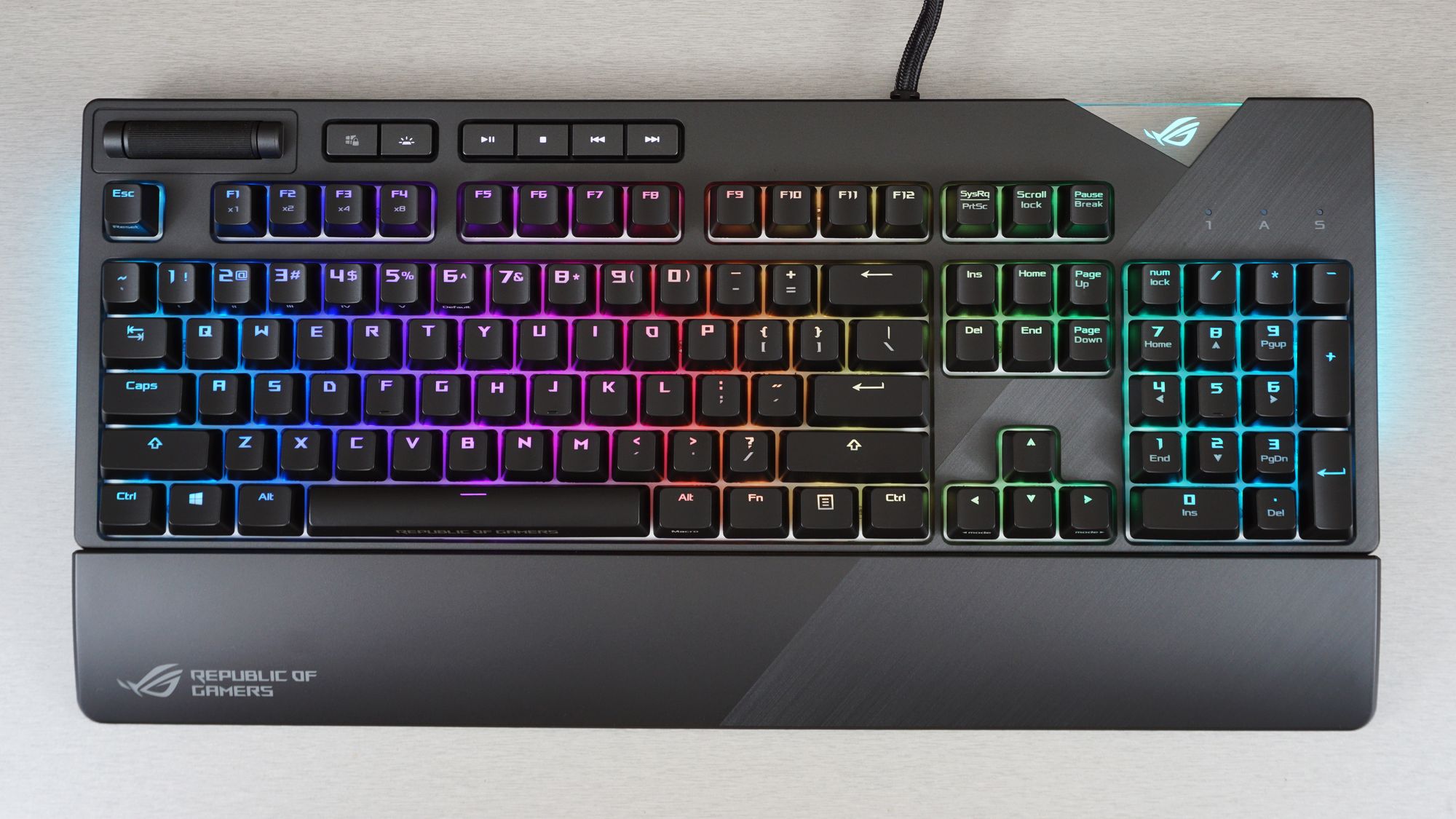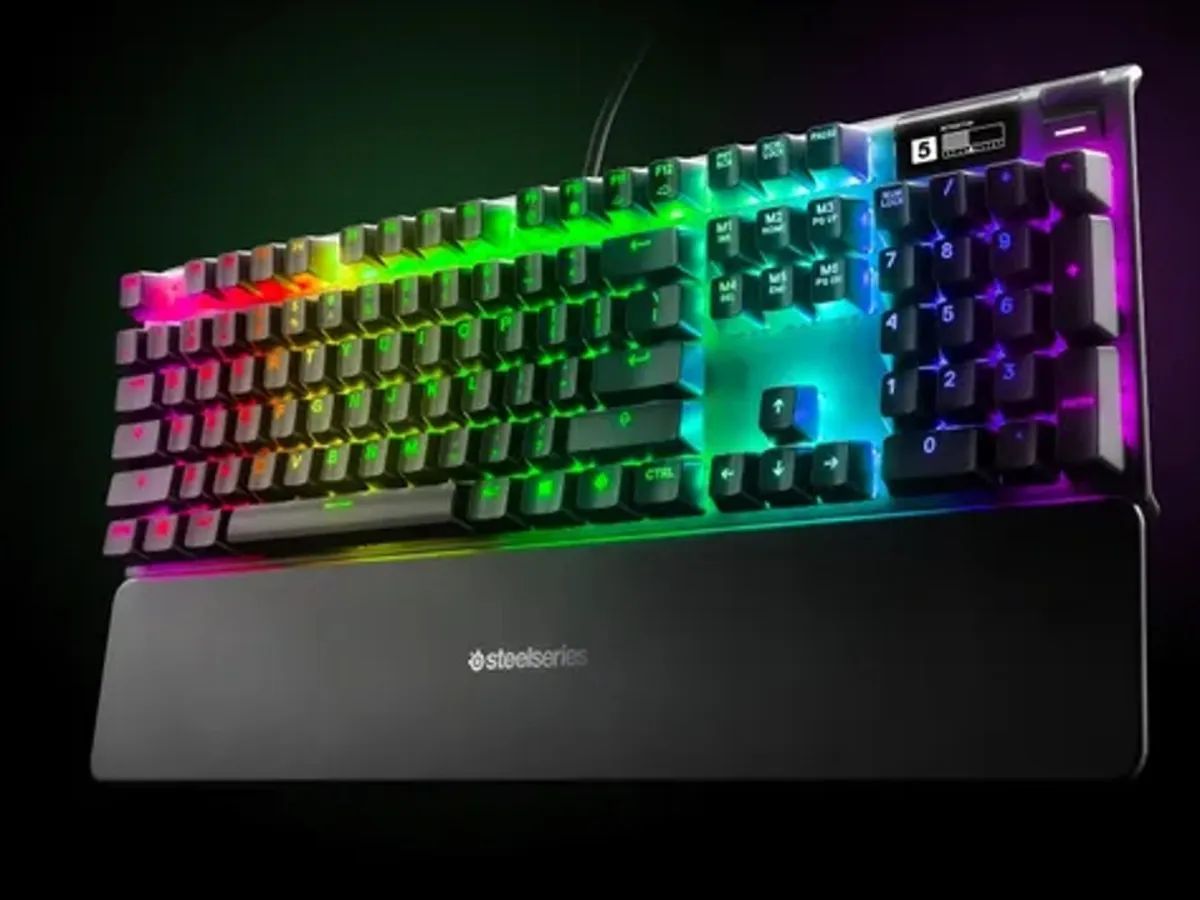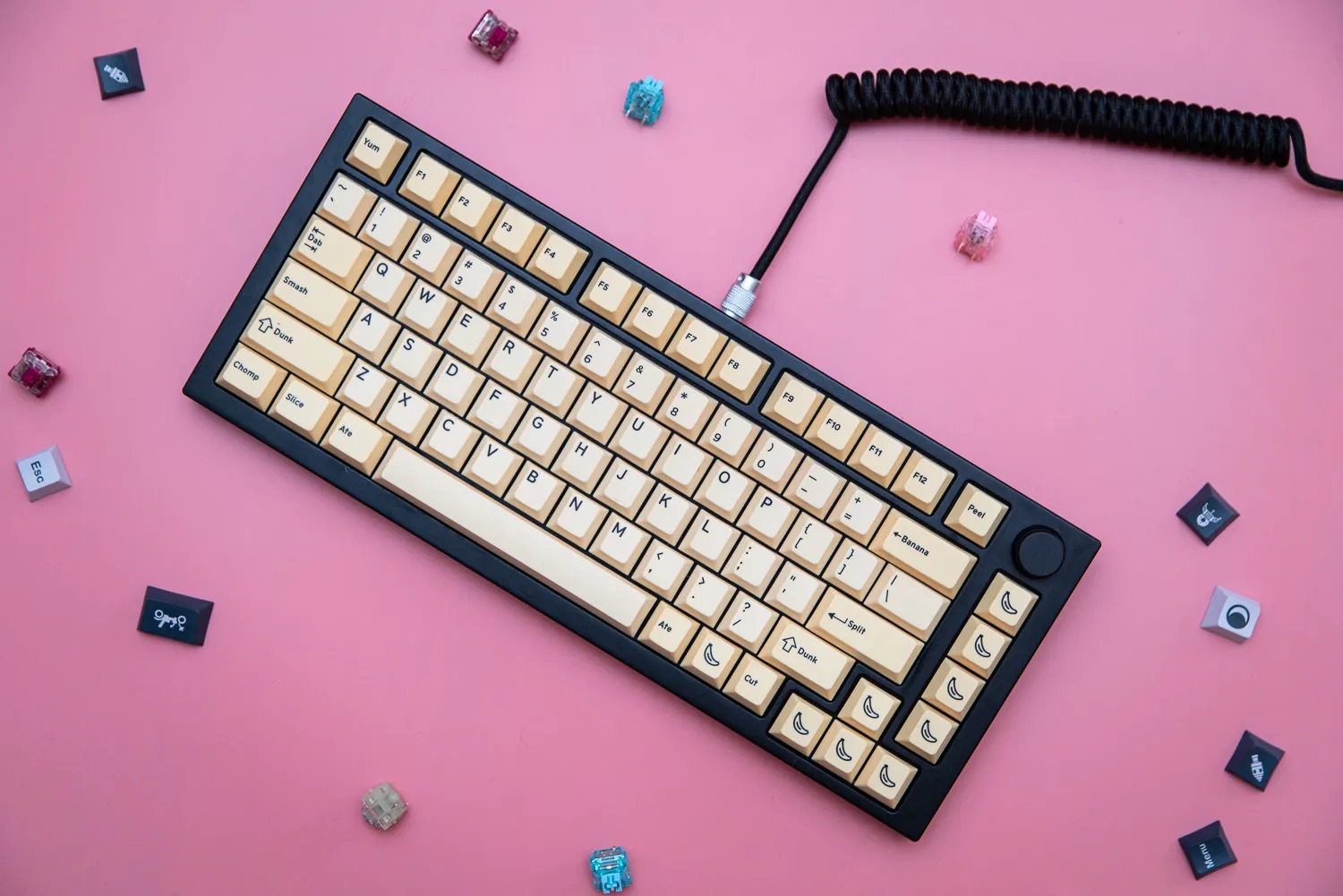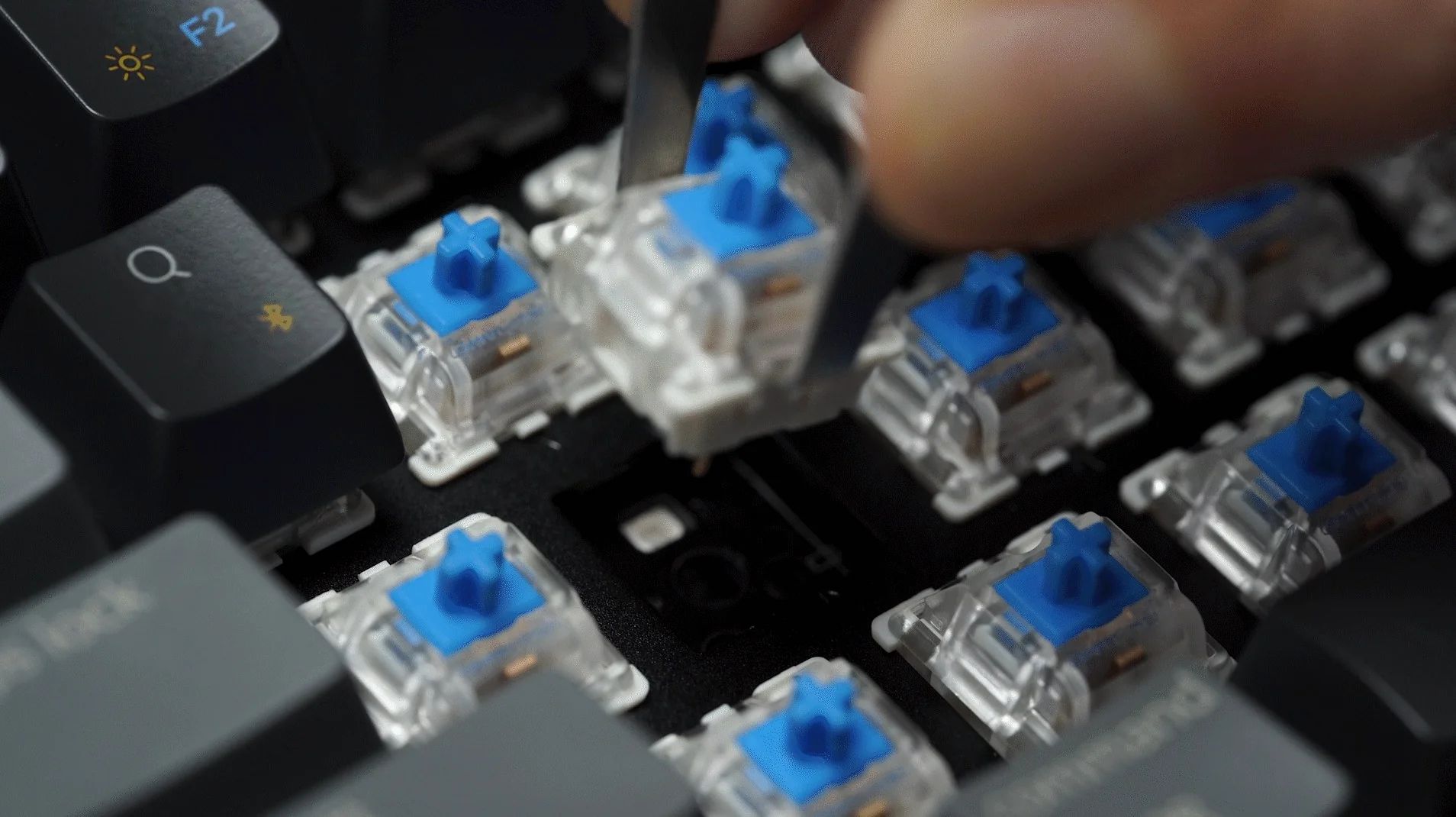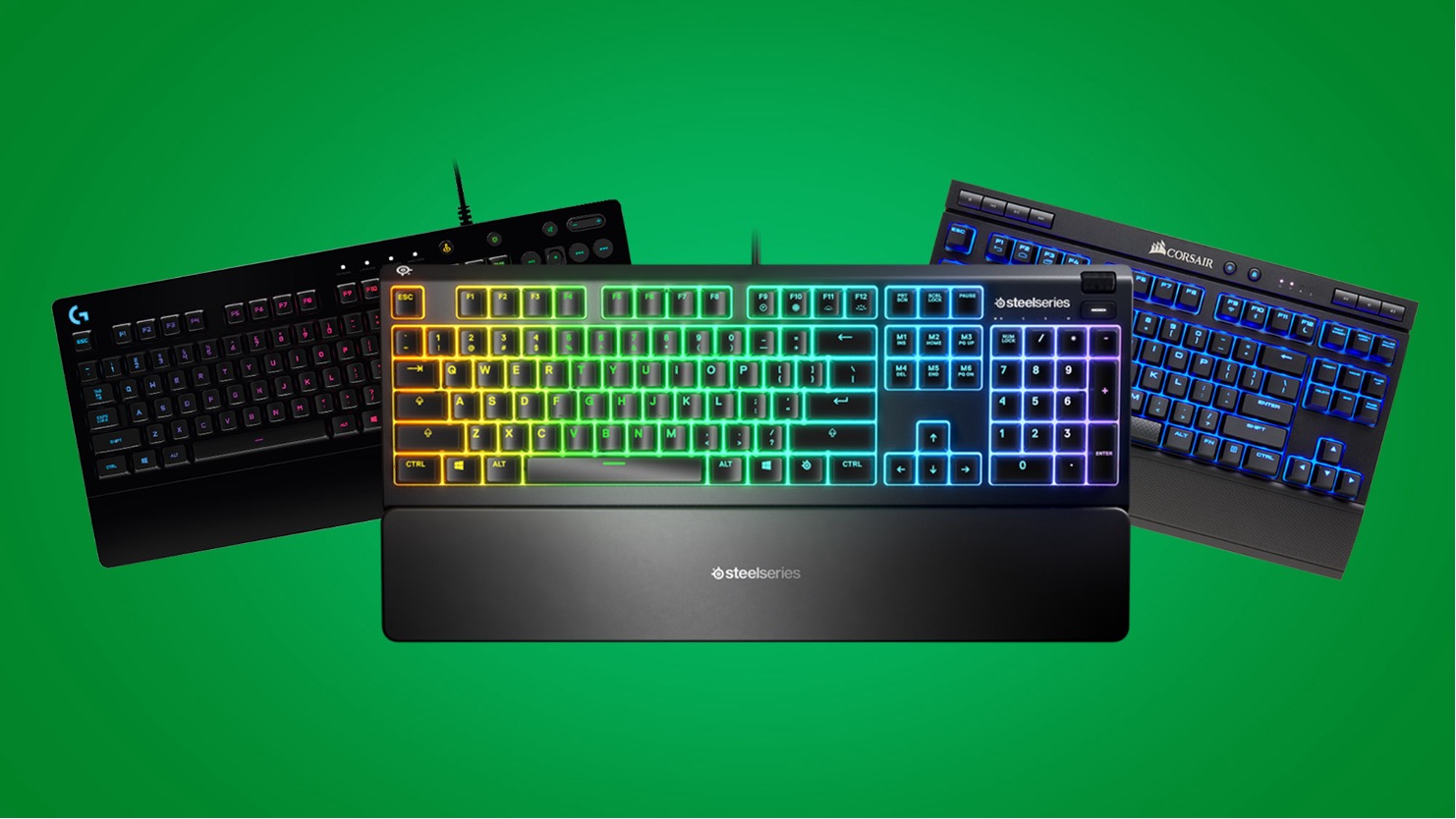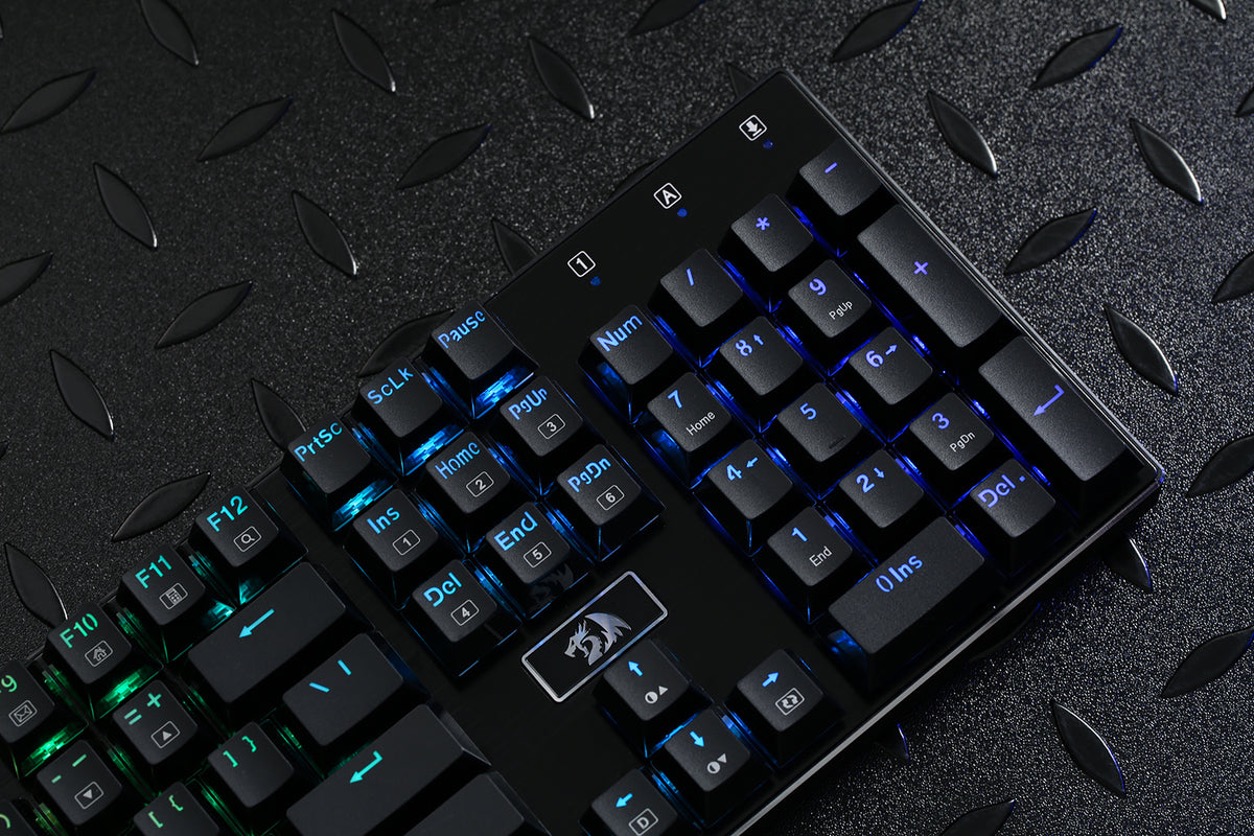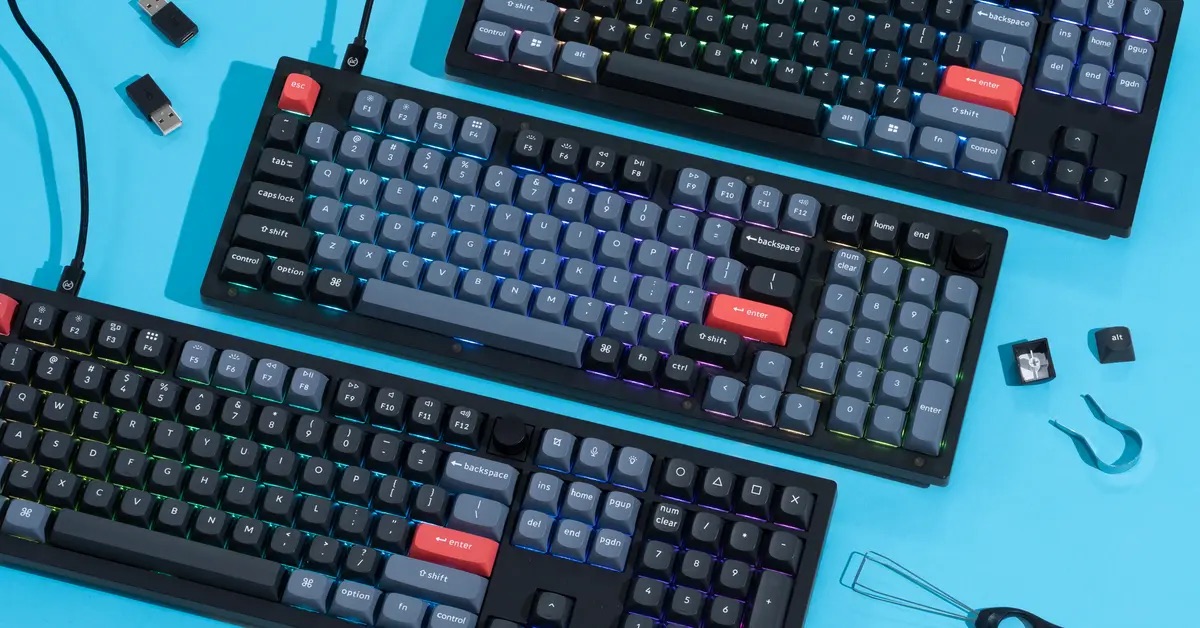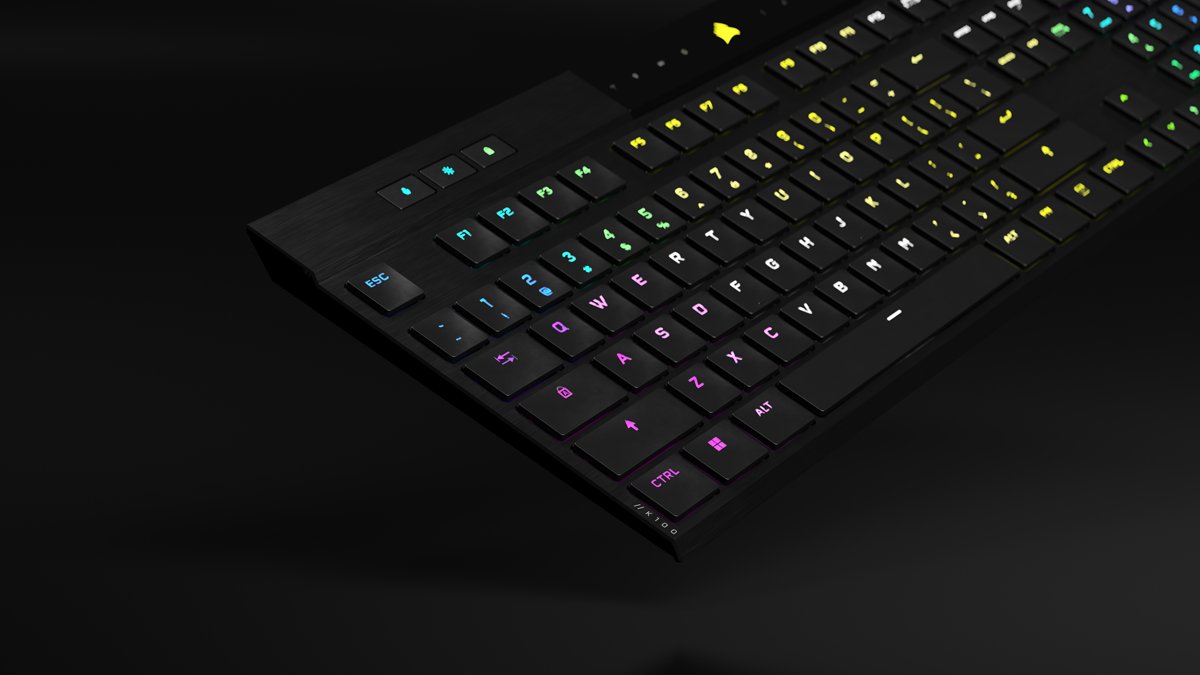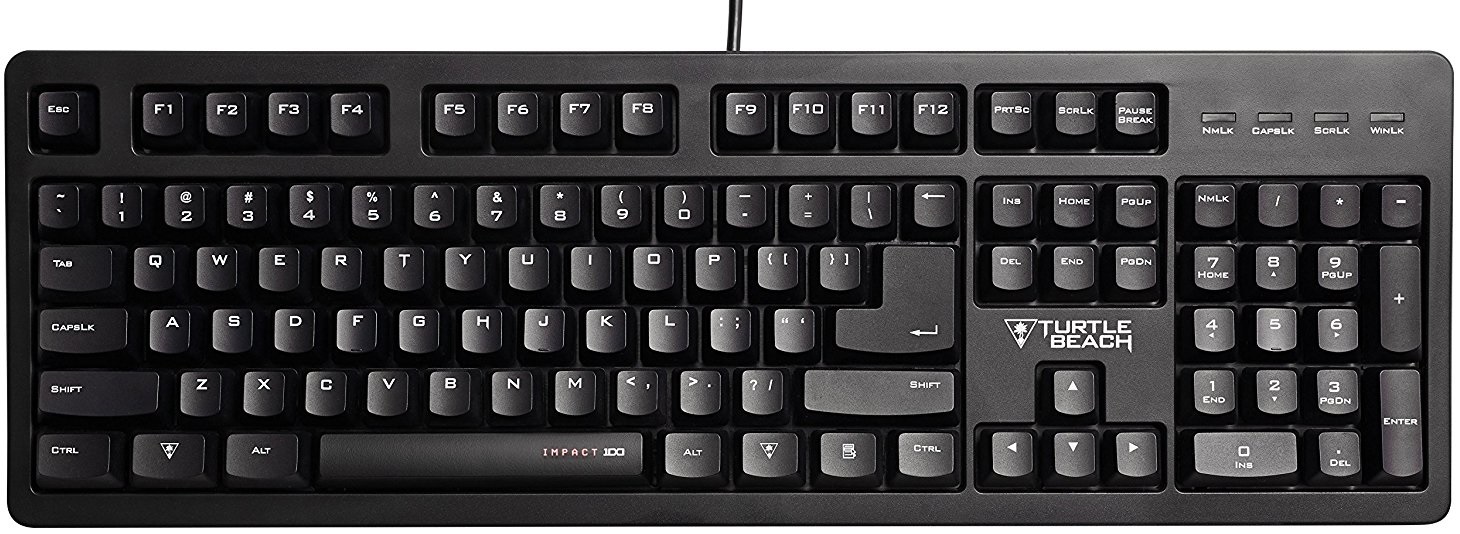Introduction
Introduction
When it comes to gaming, every detail matters, including the keyboard switches. The switches on a gaming keyboard play a crucial role in providing the tactile feedback and response time that can make or break a gaming experience. With a myriad of options available, choosing the right keyboard switches can be a daunting task for both novice and seasoned gamers. To make an informed decision, it's essential to understand the differences between membrane and mechanical switches and the various types of mechanical switches available. This guide aims to shed light on these key aspects, empowering you to make the best choice for your gaming setup.
Whether you're a competitive esports enthusiast seeking lightning-fast responsiveness or a casual gamer who values comfort during long gaming sessions, the type of switches on your keyboard can significantly impact your gameplay. By exploring the intricacies of membrane and mechanical switches and delving into the nuances of mechanical switch types, this guide will equip you with the knowledge needed to navigate the vast array of gaming keyboard options available in today's market.
As we delve into the world of gaming keyboard switches, it's important to consider the factors that should influence your decision-making process. From the tactile feel and actuation force to the noise level and durability, each aspect plays a vital role in determining the most suitable switches for your gaming needs. By understanding these factors, you can make an informed choice that aligns with your gaming preferences and enhances your overall gaming experience.
In the following sections, we'll explore the differences between membrane and mechanical switches, examine the various types of mechanical switches, and delve into the crucial factors to consider when choosing the perfect gaming keyboard switches for your setup. Let's embark on this journey to unravel the intricacies of gaming keyboard switches and empower you to elevate your gaming prowess.
Membrane Switches
Membrane switches are a common feature in many standard keyboards and are known for their quiet operation and affordable pricing. These switches consist of three layers: the top membrane layer, the conductive trace, and the bottom membrane layer. When a key is pressed, the top membrane layer makes contact with the conductive trace, completing the circuit and registering the keystroke. While membrane switches are suitable for general typing tasks, they may not provide the optimal tactile feedback and responsiveness required for intense gaming sessions.
One of the defining characteristics of membrane switches is their relatively shallow key travel and lack of distinct feedback, which can impact the overall gaming experience. The absence of a tactile bump and audible click in membrane switches may lead to reduced precision and feedback during gaming, particularly in fast-paced and competitive gameplay scenarios. Additionally, membrane switches often exhibit a mushy feel, which can contribute to finger fatigue and a less satisfying typing experience over time.
Despite these limitations, membrane switches have their own set of advantages, including their lightweight and quiet operation, making them suitable for office environments or shared spaces where noise levels need to be minimized. Furthermore, membrane keyboards are generally more affordable than their mechanical counterparts, making them an accessible option for budget-conscious gamers or those seeking a simple, no-frills keyboard for casual use.
While membrane switches may suffice for everyday typing tasks and casual gaming, their lack of tactile feedback and relatively slower response times compared to mechanical switches may hinder the performance of gamers who demand precision and rapid keystroke registration. As we delve deeper into the realm of gaming keyboard switches, it becomes evident that the distinct characteristics of membrane switches may not fully meet the requirements of dedicated gamers seeking an immersive and responsive gaming experience.
Mechanical Switches
Mechanical switches represent the pinnacle of keyboard technology, offering a level of precision, responsiveness, and tactile feedback that is highly sought after by gamers and typists alike. Unlike membrane switches, which rely on a rubber dome to register key presses, mechanical switches utilize individual mechanical components for each key. This design results in a distinct tactile feel, audible feedback, and enhanced durability, making mechanical switches the preferred choice for gaming enthusiasts and professionals.
One of the key advantages of mechanical switches is their customizable actuation force and tactile feedback, allowing users to select switches that align with their preferred typing or gaming experience. Whether it’s the linear, consistent keystrokes of a red switch, the tactile bump of a brown switch, or the audible click of a blue switch, mechanical keyboards offer a variety of switch options to cater to diverse user preferences. This level of customization empowers gamers to fine-tune their keyboard to suit their specific gaming style and requirements.
Besides offering a personalized typing experience, mechanical switches are renowned for their durability and longevity. With their robust construction and individual switch design, mechanical keyboards can withstand millions of keystrokes, ensuring long-term reliability and consistent performance. This durability is particularly valuable for gamers who engage in extended gaming sessions and require a keyboard that can withstand the rigors of intense gameplay without compromising on responsiveness.
Furthermore, the audible feedback produced by certain mechanical switches can enhance the overall gaming experience, providing satisfying click sounds that not only signal successful keystrokes but also contribute to the immersive atmosphere of gaming. This auditory feedback can be especially beneficial for gamers seeking an engaging and sensory-rich gaming environment.
While mechanical keyboards are often pricier than membrane keyboards, their exceptional build quality, customizable switch options, and enhanced tactile feedback make them a compelling choice for gamers and professionals who prioritize performance and comfort. As we delve deeper into the realm of mechanical switches, it becomes evident that their unique characteristics and customizable nature position them as a top contender for gamers seeking an elevated and personalized gaming experience.
Types of Mechanical Switches
Within the realm of mechanical switches, there exists a diverse range of switch types, each offering distinct characteristics that cater to different user preferences and gaming styles. Understanding the nuances of these mechanical switch variants is essential for selecting the ideal keyboard that aligns with your specific needs and gaming requirements.
1. Linear Switches: Linear switches, such as the Cherry MX Red and Black switches, provide a smooth and consistent keystroke without tactile feedback or audible clicks. These switches are favored by gamers who prioritize rapid and uninterrupted keystrokes, making them ideal for gaming scenarios that demand swift and precise input.
2. Tactile Switches: Tactile switches, exemplified by the Cherry MX Brown switches, offer a noticeable bump in the keystroke, providing tactile feedback without producing audible clicks. The tactile feedback enables users to discern key actuation points, making them suitable for both typing and gaming tasks that benefit from tactile responsiveness.
3. Clicky Switches: Clicky switches, such as the Cherry MX Blue switches, are characterized by their audible click and tactile bump during key actuation. These switches deliver a satisfying clicking sound, enhancing the overall typing and gaming experience. The audible feedback can contribute to a more immersive gaming environment, and the distinct tactile response appeals to users who seek a pronounced keystroke feel.
4. Speed Switches: Speed switches, including the Cherry MX Speed Silver switches, are designed for ultra-fast actuation, reducing the time it takes for a key press to register. These switches cater to gamers who prioritize rapid input and require minimal delay between keystrokes, making them well-suited for competitive gaming and scenarios where split-second reactions are crucial.
By understanding the unique characteristics of each mechanical switch variant, users can make informed decisions when selecting a gaming keyboard that aligns with their specific preferences and gaming requirements. Whether it’s the smooth and uninterrupted keystrokes of linear switches, the tactile feedback of tactile switches, the audible clicks of clicky switches, or the rapid responsiveness of speed switches, the diverse range of mechanical switch types offers a tailored solution for every gaming enthusiast.
Factors to Consider When Choosing Switches
When selecting gaming keyboard switches, several crucial factors come into play, each of which can significantly impact your overall gaming experience. By carefully evaluating these factors, you can make an informed decision that aligns with your gaming preferences and enhances your performance during gaming sessions.
1. Tactile Feel: The tactile feedback of a switch determines the keystroke’s responsiveness and the user’s typing experience. Gamers who prefer a distinct tactile bump may opt for tactile or clicky switches, while those who prioritize smooth and uninterrupted keystrokes may lean towards linear switches.
2. Actuation Force: The actuation force required to register a keystroke varies across different switch types. Understanding your preferred actuation force, whether it’s a light touch or a firmer press, can impact your typing speed, accuracy, and overall comfort during extended gaming sessions.
3. Noise Level: The audible feedback produced by certain switch types can influence the overall gaming environment, especially in shared spaces. Clicky switches, known for their audible clicks, may enhance the typing experience for some users but may be disruptive in noise-sensitive environments.
4. Durability: The durability of keyboard switches is paramount, particularly for gamers who engage in prolonged gaming sessions. Mechanical switches, known for their robust construction and longevity, offer a reliable solution for users seeking a durable and long-lasting keyboard option.
5. Customization Options: Some mechanical keyboards provide customization options that allow users to swap out switches or adjust actuation points, catering to individual preferences. This level of customization empowers gamers to tailor their keyboard to suit their specific gaming style and requirements.
6. Gaming Style: Understanding your gaming style and the specific gaming genres you engage in can influence the choice of switches. Gamers who prioritize rapid and uninterrupted keystrokes may favor linear switches, while those who seek tactile feedback and audible clicks may opt for clicky switches.
By carefully considering these factors, gamers can make an informed decision when selecting gaming keyboard switches that align with their unique preferences, gaming style, and environmental considerations. The interplay of tactile feel, actuation force, noise level, durability, customization options, and gaming style collectively shapes the keyboard switch selection process, empowering users to optimize their gaming setup for an immersive and tailored gaming experience.
Conclusion
Choosing the right gaming keyboard switches is a pivotal decision that can significantly impact your gaming performance and overall experience. By delving into the realm of membrane and mechanical switches, exploring the diverse range of mechanical switch types, and considering the crucial factors that influence switch selection, gamers can make informed choices that align with their unique preferences and gaming requirements.
While membrane switches offer affordability and quiet operation, their relatively shallow key travel and lack of distinct feedback may not fully meet the demands of dedicated gamers seeking precision and responsiveness. On the other hand, mechanical switches stand out as the preferred choice for gaming enthusiasts, offering customizable actuation force, tactile feedback, audible clicks, and enhanced durability. The diverse range of mechanical switch types, including linear, tactile, clicky, and speed switches, caters to a spectrum of user preferences and gaming styles, empowering gamers to tailor their keyboard to suit their specific needs.
As the gaming industry continues to evolve, the importance of selecting the right keyboard switches becomes increasingly pronounced, with gamers seeking optimal performance, comfort, and customization options. By carefully evaluating factors such as tactile feel, actuation force, noise level, durability, customization options, and gaming style, gamers can navigate the vast array of gaming keyboard options and select switches that elevate their gaming prowess.
Ultimately, the journey of choosing gaming keyboard switches is a personalized and nuanced process, influenced by individual preferences, gaming habits, and environmental considerations. Whether it’s the swift and uninterrupted keystrokes of linear switches, the tactile feedback of tactile switches, the audible clicks of clicky switches, or the rapid responsiveness of speed switches, the world of gaming keyboard switches offers a tailored solution for every gaming enthusiast, enhancing the immersive and personalized nature of the gaming experience.
By leveraging the insights and knowledge presented in this guide, gamers are equipped to make informed decisions when selecting gaming keyboard switches, empowering them to optimize their gaming setup and embark on a journey of enhanced performance, comfort, and enjoyment in the gaming realm.







